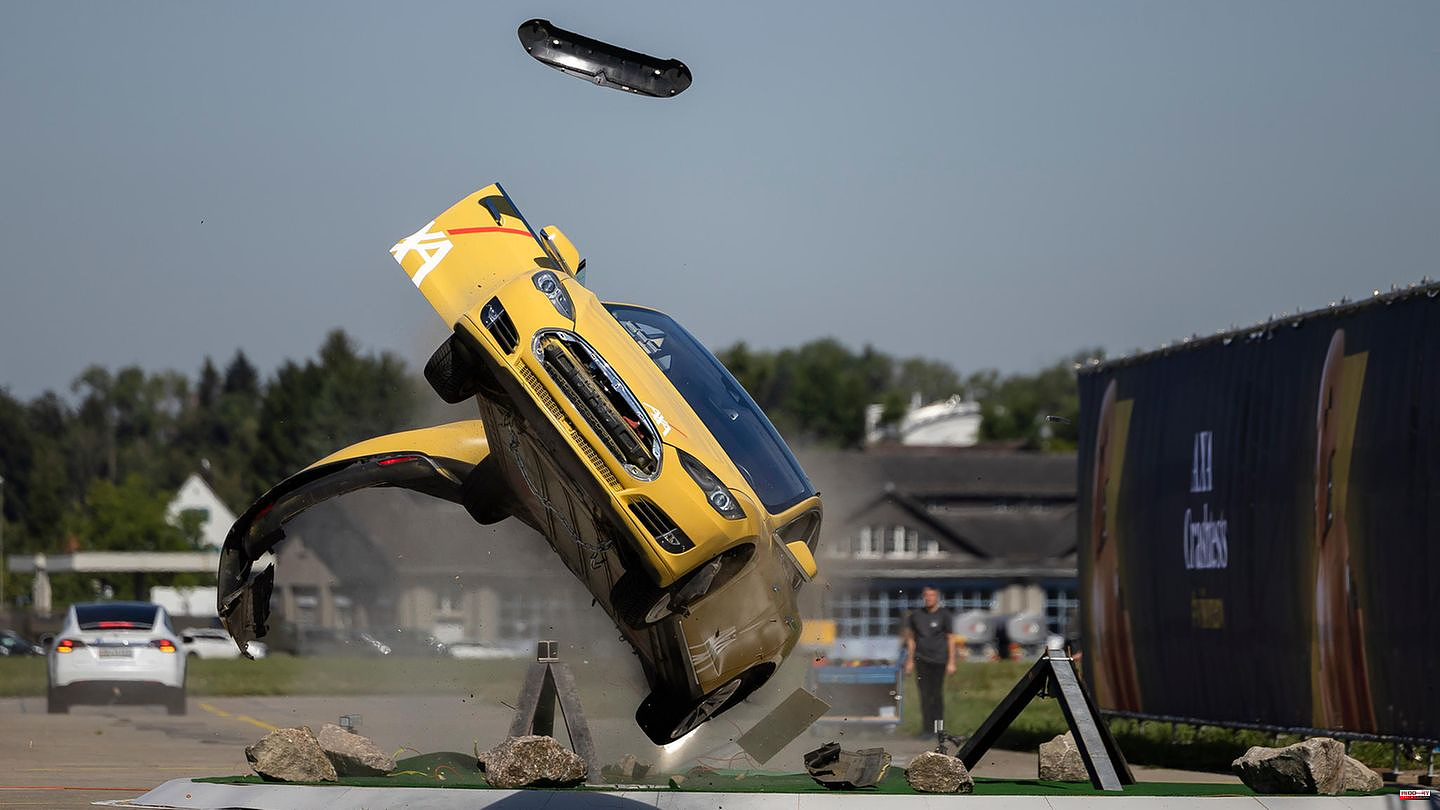Editor's note of August 31, 2022: After increasing criticism of the Axa crash test described below, the insurance company admitted to the "24Auto" portal that the fire that broke out in a Tesla was staged as part of the crash test carried out. Accordingly, "the demonstration of a battery fire would have been too dangerous due to the guests present, which is why the battery cells of the electric cars were removed before the tests," says the press office. The fire was therefore ignited by pyrotechnics installed on the vehicle, presumably for visual reasons. In addition: A removed battery has an influence on the crash behavior of the vehicle, according to the portal, which is why the validity of the test is doubtful anyway.
The first message:
If you drive an electric car, you should not only be aware of new strengths, but also be aware of the risks and dangers that were previously less well known. This is the result of a crash test by the insurance company Axa. "(...) We insurers and our customers also have to manage new risks [meaning: the growing number of registrations of electric vehicles]: Although e-cars do not cause more accidents in this country, they can often lead to more expensive individual claims," says Nils Reich, Director of Non-Life Insurance, on developments at Axa in Germany.
Two crash tests carried out by the insurance company near Zurich in Switzerland last Thursday came to the conclusion that the greatest risk of accidents with electric cars is (often) strong acceleration - and not braking, as is the case with combustion cars. "Most electric cars, especially the powerful ones, have a very high torque, which is immediately noticeable when you tap the power pedal. This can therefore lead to unwanted, jerky acceleration, which the driver can no longer control," explains Michael Pfäffli, Head of Accident Research Axa Switzerland.
In fact, according to accident statistics from Axa Switzerland, drivers of electrically powered vehicles cause 50 percent more collisions with damage to their own vehicles than those with combustion engines.
That was exactly what became clear in the first crash: A Tesla drove towards a roundabout at high speed, pressed the accelerator pedal only briefly and then drove over the roundabout in the middle. The car then overturned and sustained damage to the underbody. However, the passenger compartment remained functional. Thanks to the built-in safety systems, "normally no or minor injuries are to be expected," it says.
The fact that the Tesla vehicle suffered damage during the test should not be due to the brand itself. Rather, the damage caused is likely to represent a risk associated with electric vehicles. Because it turns out: A weak point of electric cars is apparently the underbody. It can be damaged when driving over uneven roads such as roundabouts or stones. This can also damage the drive battery, although it is well protected at the front, rear and sides. "The underbody seems to be the Achilles' heel of electric cars because the battery is not additionally protected there. Drivers should be aware of that," says Michael Pfäffli.
In view of this, Axa calls on manufacturers in general to protect the underbody of electrically powered vehicles accordingly - for example with a titanium plate. In addition, the accident researchers recommend introducing an additional crash test scenario for the standardized crash test program Euro NCAP to check the stability of the vehicle underbody. Because if the drive battery of an electric vehicle catches fire, this requires complex extinguishing work. At the same time, Axa draws attention to the fact that "the risk of fire in cars, regardless of whether they are petrol or electric, is very low."
The insurance company advises drivers of an electric car to slowly get used to the acceleration of their vehicle. After purchasing a new electric car, it can also make sense to first minimize the acceleration manually. You should also drive carefully over bumps or rocks to reduce the risk of damage and carefully inspect the underbody after driving.
The accident researchers at Axa assume that the trend towards increasing vehicle weights will continue and that new vehicles will weigh an average of two tons in a few years. In the second crash test, that weight played a decisive role. A VW Golf with a combustion engine and an electric Golf collided at a speed of 50 km/h.
However, the second weighed 400 kilograms more, which meant that the combustion engine Golf was exposed to significantly greater forces due to the higher energy load. As a result, this recorded a higher body damage. However, the driving safety systems can usually compensate for the differences. During the test, the passenger compartments of both vehicles remained intact. The occupants usually escape unharmed. The situation is different with older vehicles, which lack the safety systems. Anyone who drives a heavier car should therefore also be aware of the responsibility that lighter vehicles are disadvantaged in the event of an accident, according to the Axa council.
Those: Axa, 24Auto









